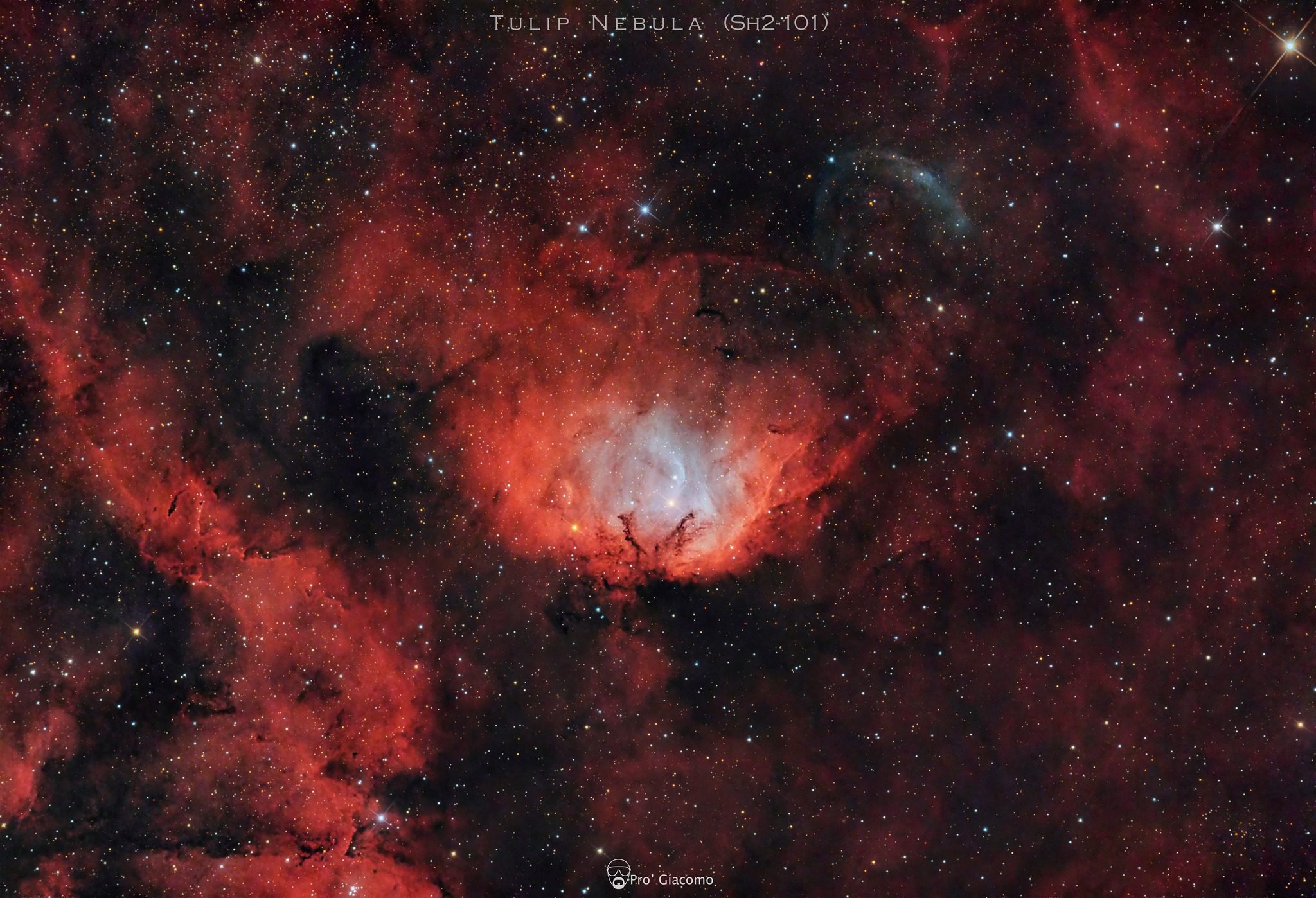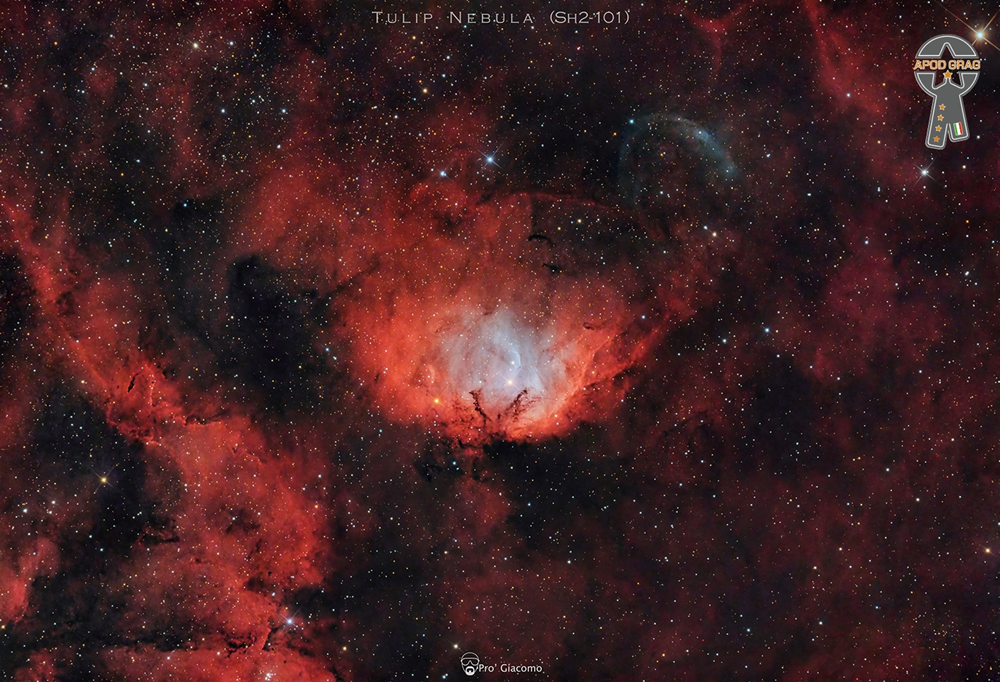The Tulip Nebula (Sh2-101) + Giacomo Pro + L-Ultimate
The Tulip Nebula (Sh2-101)
Imaged Credit: PRO’ GIACOMO (Italy)
The Tulip Nebula (listed in astronomer Stewart Sharpless' 1959 catalogue as Sh2-101) is an emission nebula visible in the constellation Swan.
It is located in the south-central part of the constellation, in the centre of a very bright and star-rich section of the Milky Way. The best period for its observation in the evening sky falls between June and November.
It is a large H II region located on the initial section of Orion's Arm about 8000 light years away from the solar system and extends 70 light years.
Ultraviolet radiation from hot young stars at the edge of the Cygnus OB3 stellar association ionises hydrogen atoms and fuels the emission of the Tulip Nebula. In particular, HDE 227018, a bright young star near the centre of the cloud, illuminates the Cosmic Tulip Nebula with a reddish glow.
Just to the top right of the nebula is barely visible the curved shock front caused by the impact on the interstellar material of the powerful jets emitted by Cygnus X-1, a microquasar, and the star with which it shares a binary system. This is one of the most intense X-ray sources measurable from Earth, most likely attributable to the presence of a black hole.
Light 79 x 300” filter: Optolong L-Ultimate
Camera: Asi 294 mc pro
Telescope: Sky-Watcher Quattro 200P + SW Coma corrector 1X
Guide camera: Asi 120 mini
Guide scope: 50-190mm
Mount: Skywatcher Eq 6-r Pro
Acquisition: Asiair Plus
Software: DSS - Pixinsight – Photoshop
Shots:
20-21/06/2023 Manduria (TA)
SQM: 19,90
Italy
Author: PRO’ GIACOMO
The Gruppo Astrofili Galileo Galilei APS was choosing this astrophotographic works as the photo of the day.
Enjoy~






